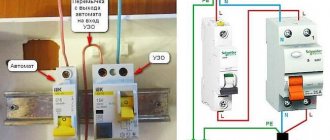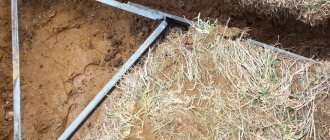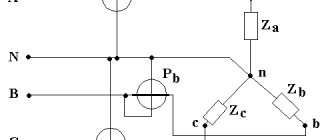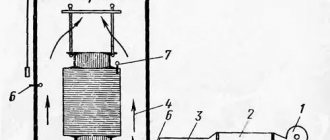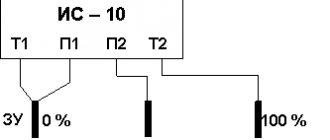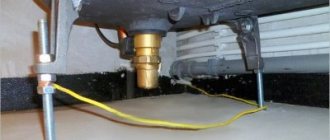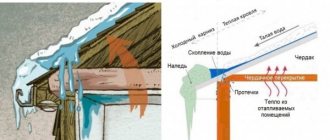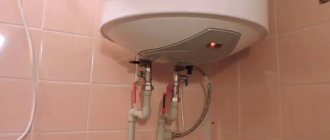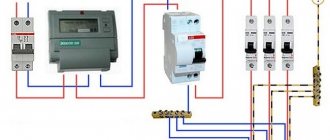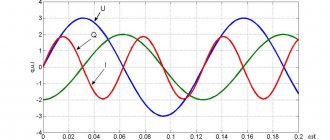Will an RCD work without grounding?
The operation of a protective device in a two-wire network occurs under special conditions. Therefore, many owners have a question: will the RCD work without grounding and will it provide protection against electric shock? In order to get an answer, it is necessary to trace the entire triggering mechanism. When a breakdown occurs on the equipment body, the RCD will not immediately trigger, since there is no grounding and there is no path for the current leak to pass further. At the same time, a potential is generated on the device body that is dangerous to human health and life.
At the moment of touching the body, the current leakage path to the ground will pass through the human body. After a certain period of time, the current value will become equal to the RCD response threshold and only then will a shutdown occur, stopping the supply of current to the faulty device. The time a person remains exposed to current will depend on the activation setting of the protective device. Despite the fairly quick shutdown, this is quite enough to cause serious electrical injury. If there was a grounding, the RCD would operate immediately after a current leak and would turn off the device before a person came into contact with it.
Thus, an RCD without grounding can be connected, but such a circuit does not guarantee 100% safety. However, older houses still use two-wire networks, and converting them to more modern three-wire networks is not always possible from a technical point of view. Therefore, in many cases, an RCD is the only option for protecting people and household appliances. When using circuits without grounding, circuit breakers must be installed together with residual current devices to disconnect the network in case of overloads and short circuits.
How to connect an RCD in an apartment without grounding - Scheme No. 1
The only protective device is installed at the entrance and covers all wiring in the apartment. Voltage is supplied to the distribution panel through the input cable. Then it goes to a two-pole circuit breaker, and then to an RCD. After this, the machines are installed on the outgoing lines.
A significant advantage is the low cost of such a scheme due to the use of only one protective device. All devices can be compactly placed even in a small distribution panel. But, a significant drawback of such a shutdown will be the tripping of the RCD during current leaks, as a result of which the entire apartment will be de-energized.
Scheme No. 2
The operation of an RCD without grounding can be carried out according to one more scheme. In this case, protective devices are installed not only at the entrance, but also on each outgoing branch. The incoming RCD is installed in the same way as in the previous version, and all the others are installed after the circuit breakers protecting the outgoing lines. The total number of security devices will depend on the specific home network configuration. Often water heaters, electric stoves, dishwashers and washing machines are separately connected to the protection.
Connection methods
There are four known connection options:
- Connecting a two-pole to a single-phase network.
- Connecting a four-pole to a three-phase network using a neutral.
- Connecting a four-pole to a three-phase network without using a neutral.
- Connecting a four-pole in a single-phase network.
Let's consider each case separately.
Connecting a two-pole RCD to a single-phase network
Two-pole RCD for single-phase network
Among all the listed connection methods, this is perhaps the most common scheme. When it is connected, there are no complex turns. Moreover, such a device can be connected independently. To do this, you need to find out on the case or in the passport exactly where the neutral or zero is located on the machine, as well as the phase. As a rule, the following signs are indicated on the machine: 1, 2 and N. 1 means an incoming phase conductor, 2 means an outgoing phase conductor and N means zero or neutral.
There have been cases when the device failed. Why? The whole point is that a current exceeding its rated operating current passed through it. To prevent this from happening in your case, buy a device with as high a rated operating current as possible.
Moreover, it is important to follow the correct sequence when connecting. Otherwise, problems may arise during its operation.
For example, if you confuse the zero and phase terminals when connecting, the device will immediately fail.
Connecting a four-pole RCD to a three-phase network using a neutral
Four-pole RCD three-phase network, neutral
This connection method is also quite common. The principle of its connection is practically no different from a single-phase network. Only in this case is a four-pole RCD installed. It has four incoming wires, which are designated on the machine as A, B, C and zero (N). As a rule, the connection diagram is indicated on the machine body. The only difference may be that on a four-pole device the zero may be on the other side. The most important thing is to connect the outputs and inputs correctly.
Such RCDs are used to protect electrical wiring from fire at high leakage currents. If used to protect against electric shock to a person, it is recommended to use a leakage point that is between 10 and 30 mA.
To protect the device itself, a circuit breaker is mounted directly in front of it.
Also, when connecting, it is extremely important to observe the color marking of the wire, as well as the connection of the neutral and phase conductors
Connecting a four-pole RCD to a three-phase network without using a neutral
Connection to a three-phase network without neutral
This circuit is used in most cases to connect three-phase electric motors. The machine will disconnect it from the network as soon as a slight short circuit occurs in the windings. To connect a three-phase motor, three phases of the supply voltage are required, namely A, B and C. You will also need a PE protective conductor, which will serve as the chassis ground. As a result, there is no point in purchasing a five-core wire, but four wires will be enough.
Connecting a four-pole RCD in a single-phase network
Four-pole RCD single-phase network
This use can be safely called irrational and expedient. However, in some cases this is the only correct solution. For example, if in the future you plan to expand the electrical wiring by switching it to a three-phase network or adding several single-phase networks. Moreover, such a circuit is used in cases of temporary use as an emergency replacement for a faulty two-pole RCD. Connection is quite simple. To do this, the zero and phase are connected to the corresponding terminal. In this case, the phase conductor is connected to the terminal only if the “Test” button is currently connected. This terminal is located next to the zero terminal.
How does an RCD with grounding work?
The residual current device is selected in accordance with the network configuration where it is planned to be installed. The presence or absence of a PE grounding conductor should be immediately determined. In modern buildings it is initially provided for by the design. At old buildings, the PEN scheme is still used, which involves combining the protective conductor with the neutral wire.
Installation of a connection to the ground is considered more effective, since the circuit is disconnected in this case immediately when a current leak occurs. In the PEN scheme, as already noted, shutdown occurs only after direct human contact with the equipment.
If there is still grounding in the circuit, then before installing the protective device, its type should be clarified. For example, the TN circuit assumes solid grounding of the neutral of the power source. Its variation is the TN-C circuit, which combines in a single wire the neutral working and protective conductors throughout the entire electrical circuit. This simple and inexpensive option has a significant drawback: in the event of a break in the PEN conductor, if the device has its own grounding, there is a danger that the entire potential will transfer to its body and the same voltage will appear on it as in the entire circuit.
Sometimes electricians use a jumper that shorts the neutral and ground terminals in the outlet. Such a scheme is considered incorrect and dangerous due to the high probability of electric shock. When the PEN wire breaks, the RCD will not trip, and dangerous voltage will appear on the device body. Injury can only be avoided by accident: at the moment of contact with a current-dangerous housing, a person must also touch the grounding circuit, for example, water supply or heating pipes.
The TN-S circuit is considered the most reliable for connecting an RCD, where the neutral protective conductor is connected separately. It is combined with the neutral only in the power source, which ensures maximum protection and almost completely eliminates the possibility of electric shock. Even if the neutral or ground wire breaks, all devices in the circuit will continue to work. Dangerous voltage will not appear on the housings, since the potential will transfer to the other, remaining wire. If two wires break at once, all devices and the circuit itself will not pose a danger to people, since the electricity will be completely turned off.
There is another so-called intermediate connection scheme TN-CS, when the neutral and ground wires can be combined only in separate sections and acquire the properties of a PEN conductor. In this case, installation of an RCD is mandatory, otherwise the circuit will be left without protection at all.
Description of the device and its types
All models on the market today are designed for installation in a load control cabinet or on an electrical panel equipped with a DIN rail. RCDs are divided into several types, depending on the type of protection required. The figure below shows the symbols on the RCD body.
By type of current there are:
- Type “AC” - they can disconnect the circuit both when an instantaneous leak occurs and when it gradually increases.
- Type “A” is similar to the previous one, but differs in the presence of a node that controls direct current, which is why its cost is much higher.
- Type “B” is capable of detecting leakage of both direct and alternating currents, as well as rectified ones, due to which it is used in manufacturing enterprises, but for domestic needs it is impractical due to its high cost. If protection is required in the circuit of a private house or apartment, in the case of the operation of expensive devices and equipment, many manufacturers recommend installing an RCD of type “A”.
Based on the response time delay, the following are distinguished:
- Type “S” (0.15-0.5 seconds).
- Type "G" (0.06-0.08 seconds).
According to the operating principle, there are electromechanical and electronic:
- The first ones are triggered by the leakage current itself
- The latter have an electronic circuit and require an additional power source for their operation.
Based on the number of poles, RCDs are divided into:
- Two-pole (single-phase).
- Four-pole (three-phase).
